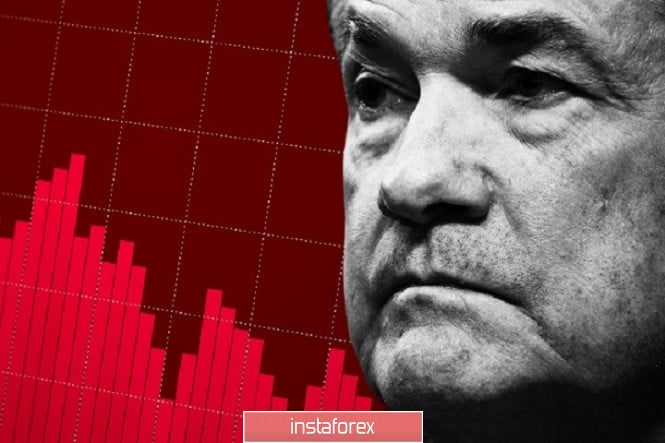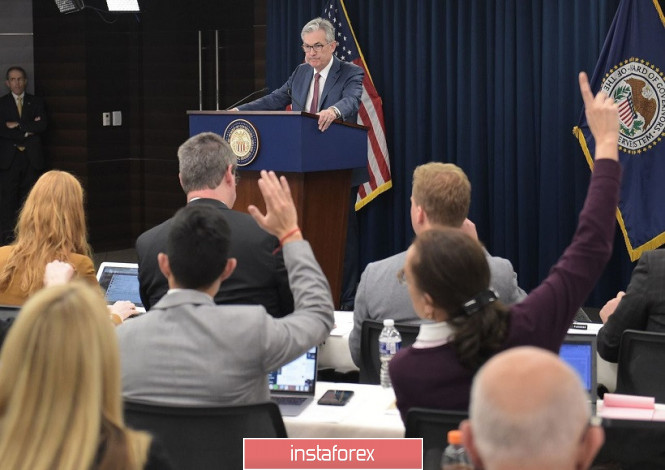The results of the October meeting of the Federal Reserve are controversial. By and large, the regulator implemented the most anticipated scenario: they lowered the interest rate by 25 basis points and hinted at maintaining a wait-and-see position in the near future. Given the general readiness for such a scenario, the dollar should have reacted positively, since the very fact of easing monetary policy was already taken into account in current prices. But the subsequent rhetoric of Jerome Powell crippled the position of dollar bulls. As a result, the dollar index fell from 97.599 to the current 97.148, and in turn, the EUR/USD pair consolidated in the middle of the 11th figure, in anticipation of tomorrow's Nonfarm. On the whole, nothing catastrophic happened for the dollar - the Fed simply did not remove the burden of uncertainty from the greenback regarding the future prospects of monetary policy.

Yesterday, the US central bank clearly tried to maintain a balance between a hawkish and dovish mood. This "art of diplomacy" was perfectly mastered by the head of the ECB Mario Draghi, while his colleagues from the Federal Reserve are not so elegant in their wording. On the one hand, Fed members removed the phrase from the statement that they were ready to "take appropriate measures to support economic growth." They replaced this wording with a promise to monitor incoming data in order to "evaluate the appropriate rate path for federal funds." Translated into human language, this means that the short-term cycle of adjusting the interest rate is completed and now everything will depend on the incoming data - that is, the regulator takes a pause for an indefinite period.
On the other hand, the Fed rather restrained the general state of affairs in the US economy. The regulator acknowledged that uncertainty regarding future prospects still remains, general and core inflation is below the targeted two percent level, and economic activity is growing at a "moderate pace." Fed members also noted a negative trend in the areas of export and business investment. If we talk about the positive aspects, then the regulator took note of the US labor market: the growth rate of the number of employed, as well as record low unemployment is traditionally on the side of dollar bulls.
In general, the tonality of the accompanying statement was rather mild. The Fed suspended the interest rate reduction cycle, but, as they say, "with an open date." While many of the experts expected a rate increase in the next year (some of them even spoke about the first half of 2020). However, Jerome Powell put an end to such expectations. Speaking at a press conference, he said that the regulator is unlikely to consider the option of raising the rate in the foreseeable future. According to him, "this requires a steady and fairly significant increase in inflation." Only in this case, will the Federal Reserve only begin to "think" about such a move, according to Powell.
It is worth recalling that at the September meeting, when the Fed also lowered the interest rate by 25 basis points, there was a split among its members. The dot plot of expectations of Fed members suggests that seven officials of the US central bank stated the advisability of further steps to ease monetary policy, while five of their colleagues were in favor of maintaining a wait-and-see position, at least until the end of the year. Five members of the Fed did not rule out a rate hike of 25 basis points.
In turn, Powell's latest position indicates that the hawks have reconsidered their opinion on the prospects for raising the rate next year - now everything will depend on the dynamics of inflation growth. In this context, it will be interesting to look at the minutes of the meeting yesterday (it will be published in two weeks) in order to assess the alignment of forces in the Fed.

If monetary policy is now truly "tied" to inflation, then this is bad news for dollar bulls. The consumer price index published in October was indeed very weak. The overall monthly index unexpectedly slowed to zero, contrary to growth forecasts to 0.1%. In annual terms, the CPI remained in place: in September, the indicator reached 2.4% YOY, although economists had expected growth to 2.5%. Core inflation was also disappointing. The core index, excluding food and energy prices, fell more than expected. In monthly terms, the index reached 0.1% last month, although experts predicted more substantial growth. The slowdown in core inflation is an alarming sign, especially amid a decline in the price index of GDP and the inflationary component of Nonfarm.
Thus, the results of yesterday's Fed meeting are controversial, but they are clearly not in favor of the US currency. Further corrective growth of the EUR/USD pair will depend on today's data on the growth of European inflation and tomorrow's Nonfarm (especially on the dynamics of wage growth). If these fundamental factors "resonate", then the pair will overcome the nearest resistance level of 1.1210 (the upper line of the Bollinger Bands indicator on the daily chart), with the intention of reaching the main resistance level of 1.1300 (the lower boundary of the Kumo cloud, which coincides with the upper line of the Bollinger Bands indicator on the weekly chart).
The material has been provided by InstaForex Company - www.instaforex.com